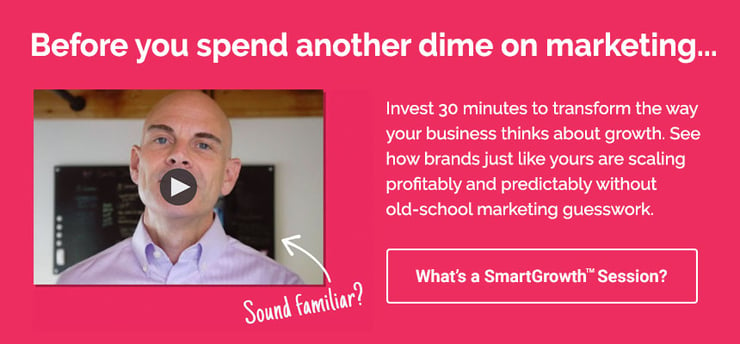Ever wonder why some B2B companies seem to effortlessly dominate industry conversations while others struggle to be heard? The secret sauce isn't just expertise—it's a rock-solid thought leadership strategy. As a B2B founder or CEO, you've got the knowledge. But are you leveraging it effectively?
In this article, we'll dive into five game-changing tactics that'll transform your company into a go-to industry authority. From original research that turns heads to employee advocacy that amplifies your brand message, we've got the insider scoop on tactics you can implement right now. Ready to leave your competition in the dust and become the voice your industry turns to? Let's get started.
Why Thought Leadership is Crucial for B2B
Before we dive into the tactics, let's talk about why thought leadership matters in the B2B space. It's not just about showing off—it's about creating real value for your audience and your business.
Establishes authority & trust: In the land of B2B, trust is currency. When you consistently share valuable insights and expert knowledge, you're not just tooting your own horn—you're building a foundation of credibility that can make or break deals. Think about it: would you rather buy from a company that's barely visible in your industry, or one that's constantly pushing the envelope and sharing game-changing ideas?
Humanizes brand: Let's face it, B2B can sometimes feel a bit... impersonal. Thought leadership puts a face (or faces) to your brand, showing the human expertise behind your products or services. It's like the difference between buying from a faceless corporation and getting advice from a trusted mentor.
Long sales cycles, multiple stakeholders: B2B sales aren't exactly impulse buys. With complex decision-making processes and multiple stakeholders involved, thought leadership content serves as a constant touchpoint throughout the buyer journey. It's like leaving breadcrumbs of expertise that lead right to your door.
How to Level Up Your B2B Thought Leadership Strategy
1. Produce Original Research
Want to really turn heads in your industry? Start pumping out original research. This isn't just rehashing what everyone else is saying—it's about bringing new data and insights to the table.
Conduct industry surveys and publish comprehensive reports: Picture this: you're the first to reveal that 73% of CFOs in your industry are planning to increase AI spending next year. Suddenly, you're not just part of the conversation—you're leading it.
Analyze proprietary data to uncover unique insights: You're sitting on a goldmine of data from your own operations. Why not use it to spot trends and share insights that no one else can? It's like having a secret weapon in the thought leadership arms race.
Collaborate with academic institutions for in-depth studies: Partnering with universities isn't just for the ivory tower types. It adds serious credibility to your research and can uncover insights you might have missed on your own.
2. Leverage Multimedia Formats
Not everyone wants to read a 5,000-word whitepaper (shocking, I know). Mix it up with different content formats to catch eyes, ears, and minds.
Launch a podcast featuring industry experts and thought leaders: Imagine hosting weekly chats with the biggest names in your industry. Not only are you creating valuable content, but you're also building relationships with key players.
Create engaging video content, such as explainer videos or webinars: Sometimes, a two-minute video can explain a concept better than a novel-length article. Plus, it gives your audience a chance to put faces to names.
Develop long-form written content like case studies, whitepapers, and e-books: For those deep-dive thinkers in your audience, meaty content pieces show you're not just skimming the surface.
3. Harness Employee Advocacy and Ambassadorship
Your employees are your secret weapon in the B2B thought leadership strategy game. It's time to unleash them.
Empower employees to share company content on their personal networks: Your sales rep might have 500 LinkedIn connections in your target market. Why not tap into that audience?
Feature subject matter experts in company content and external publications: Got a coding wizard or a supply chain guru on your team? Let them shine. It shows the depth of expertise in your ranks.
Provide training and resources for employees to develop their personal brands: Help your team become mini-influencers in their own right. It's like having a whole army of thought leaders instead of just one.
4. Use Social Listening to Inform Content
Want to know what your audience really cares about? Stop guessing and start listening.
Monitor industry conversations and trending topics on social media: It's like having your ear to the ground, but for the digital age. What's keeping your potential customers up at night?
Identify customer pain points and questions to address in your content: Listen in on sales calls or check in regularly with your customer service team to better understand your target audience. If you're answering the questions your audience is actually asking, you'll become their go-to resource faster than you can say "B2B thought leadership strategy."
Track competitor content and identify gaps in the market: Find the topics no one else is talking about, and suddenly you're the only voice in a very interested crowd.
5. Develop Proprietary Frameworks and Models
Want to really cement your place as a thought leader? Create something that becomes the industry standard.
Create unique methodologies for solving common industry problems: If you can name it, you can claim it. Think "Porter's Five Forces" but for your industry.
Design visual models that simplify complex concepts: A picture is worth a thousand words, especially when you're explaining intricate B2B concepts.
Trademark and promote your frameworks to establish industry recognition: When people start using your model in their own presentations, you'll know you've made it in the thought leadership world.
By implementing these five tactics, you're not just participating in industry conversations—you're steering them. Your B2B thought leadership strategy will transform from a nice-to-have into a powerful engine driving brand awareness, authority, trust, and ultimately, business growth. Remember, in B2B, being seen as a thought leader isn't just about being the loudest voice—it's about being the most valuable one.
Whether you're leveraging the power of multimedia formats or tapping into the potential of employee advocacy, each tactic we've explored offers a unique opportunity to elevate your B2B thought leadership strategy. The key is to start implementing these tactics consistently and authentically.
However thought leadership is only one component of a comprehensive B2B marketing strategy. At Brand Theory, we’ve been helping brands take the guesswork out of marketing for more than two decades. Get our free B2B Marketing Playbook and unlock even more strategies to supercharge your go to market strategy. Discover how thought leadership fits into a comprehensive and cohesive marketing approach and set your brand up for predictable and profitable growth.





.png)
.png)
.png)